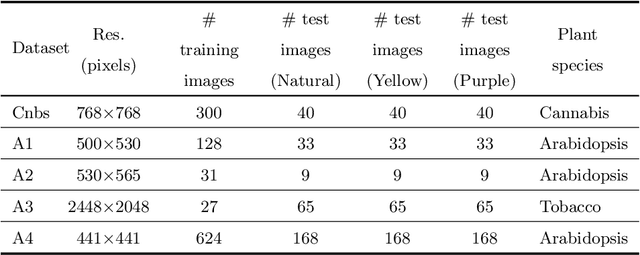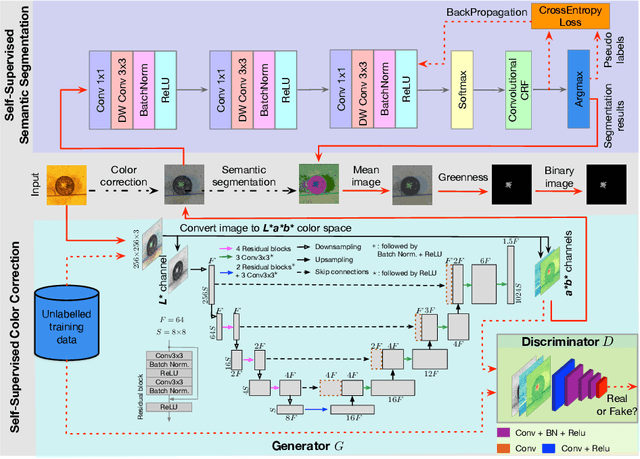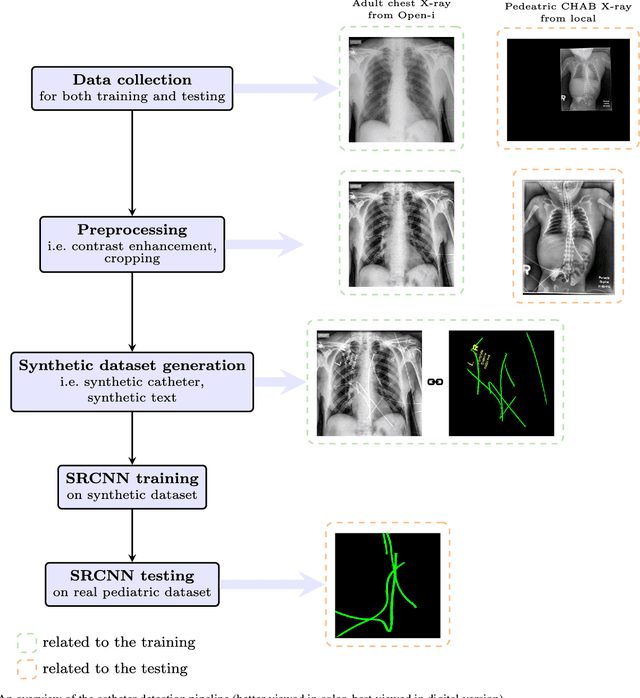Scott Adams
Self-Supervised Leaf Segmentation under Complex Lighting Conditions
Mar 29, 2022



Abstract:As an essential prerequisite task in image-based plant phenotyping, leaf segmentation has garnered increasing attention in recent years. While self-supervised learning is emerging as an effective alternative to various computer vision tasks, its adaptation for image-based plant phenotyping remains rather unexplored. In this work, we present a self-supervised leaf segmentation framework consisting of a self-supervised semantic segmentation model, a color-based leaf segmentation algorithm, and a self-supervised color correction model. The self-supervised semantic segmentation model groups the semantically similar pixels by iteratively referring to the self-contained information, allowing the pixels of the same semantic object to be jointly considered by the color-based leaf segmentation algorithm for identifying the leaf regions. Additionally, we propose to use a self-supervised color correction model for images taken under complex illumination conditions. Experimental results on datasets of different plant species demonstrate the potential of the proposed self-supervised framework in achieving effective and generalizable leaf segmentation.
Automatic catheter detection in pediatric X-ray images using a scale-recurrent network and synthetic data
Jun 04, 2018



Abstract:Catheters are commonly inserted life supporting devices. X-ray images are used to assess the position of a catheter immediately after placement as serious complications can arise from malpositioned catheters. Previous computer vision approaches to detect catheters on X-ray images either relied on low-level cues that are not sufficiently robust or only capable of processing a limited number or type of catheters. With the resurgence of deep learning, supervised training approaches are begining to showing promising results. However, dense annotation maps are required, and the work of a human annotator is hard to scale. In this work, we proposed a simple way of synthesizing catheters on X-ray images and a scale recurrent network for catheter detection. By training on adult chest X-rays, the proposed network exhibits promising detection results on pediatric chest/abdomen X-rays in terms of both precision and recall.
 Add to Chrome
Add to Chrome Add to Firefox
Add to Firefox Add to Edge
Add to Edge